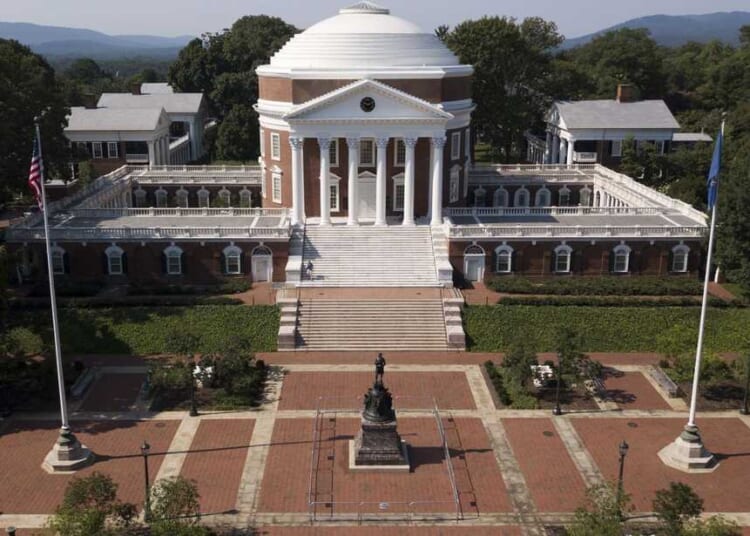The College Fix has done a series of articles recently estimating the number of administrators at various colleges compared to the number of students. The numbers are pretty surprising.
The University of Virginia employs one full-time administrator for every three undergraduates at the school, according to an analysis conducted by The College Fix…
During the 2013-14 school year, there were 291 full-time administrators and support staff employees per 1,000 undergrads, and in 2021-22, the most recent year for which data are available, there were 318 full-time administrators and support staff employees per 1,000 undergrads.
Meanwhile, the number of full-time educators per 1,000 undergraduates has stayed roughly the same over the last 10 years, hovering at an average of 103 instructors per 1,000 students, according to the data.
And in case you’re wondering the school has 55 DEI positions at an annual cost of $5.8 million. What in the world do these administrators do all day? My guess is count their money in their copious free time.
But things at UVA aren’t quite as bad as they are at Vanderbilt.
Vanderbilt University employs more than one full-time administrator for every two students, a College Fix analysis found.
During the 2021-22 academic year, the most recent for which data are available, the private Nashville university employed 3,516 full-time administrators and support staff, according to information the school filed with the federal Integrated Postsecondary Education Data System.
The school has fewer than 7,000 undergrads. How can it possibly required 3,516 administrators to keep the place going? Glenn Reynolds who teaches law at a nearby university offered an explanation.
“No school should have that many administrators,” he wrote. “Since universities are nonprofits, they don’t pay dividends to shareholders. Instead, they tend to plow ‘profits’ into staff and buildings.”
“The bloated staff has been a major cause of skyrocketing tuition and student debt,” he said.
Ironically, when the College Fix asked Vanderbilt for an explanation none of the 3,500 staff members could find time to respond.
Finally, last week the site did a similar analysis for the University of Michigan, this time focusing on DEI staffers.
The University of Michigan continues to exponentially grow the number of staffers dedicated to advancing diversity, equity, and inclusion, with at least 241 paid employees now focused on DEI and payroll costs exceeding $30 million annually, according to an analysis conducted for The College Fix.
The payroll costs are $23.24 million for salaries and $7.44 million for benefits, or $30.68 million, an amount that would cover in-state tuition and fees for 1,781 undergraduate students.
The Fix points to a January 2023 review of the first five years of UM’s diversity plan which ran from 2016 to 2021:
Despite the fact that students were less likely to feel discriminated against on the bases of race, sex, religion, and political beliefs (though more likely on the basis of ability, sexual orientation, national origin, and social class), the student body as a whole experiences campus in a worse way than it did in 2016.
By nearly every metric in the survey, students have become less happy since the beginning of DEI 1.0. They are less likely to believe that U-M has an institutional commitment to DEI and less likely to feel valued or that they belong on campus. The number of students who felt that they were treated fairly and equitably at Michigan fell by over 3 percent. Finally, the number of students satisfied with the campus climate overall fell by almost 11 percent.
The one area that has not worsened is the general DEI elements of the climate (e.g., whether the campus is hostile or friendly, racist or not racist, contentious or collegial). There was no statistically significant difference between the 2016 and 2021 samples.
The article concludes the result of all of this was a school, “that is a bit more diverse, much more insulated, and significantly less happy.” Is anyone really surprised by that? It’s hard to imagine a DEI program producing any other results than those. DEI isn’t meant to make the campus a happier place it’s meant to feed student grievances against the school, fellow students and society at large. I think it’s fair to say if the campus got happier that would be deemed a failure by most DEI administrators.
Anyway, if you’re wondering why colleges keep getting more expensive and more woke at the same time, this is why.

